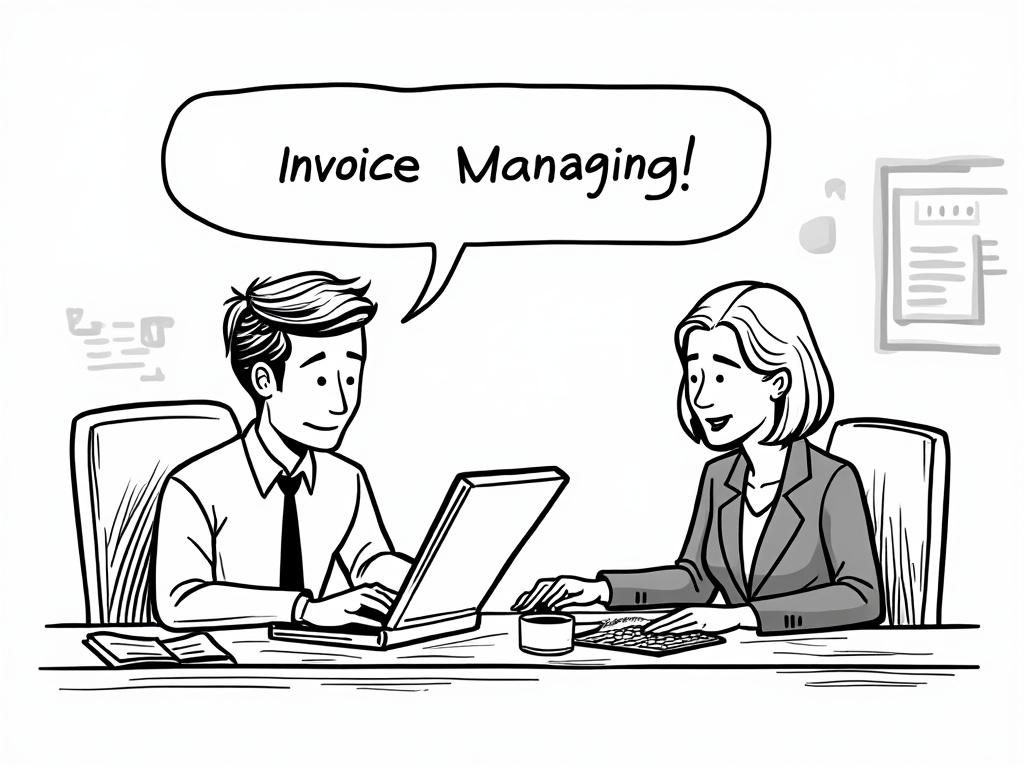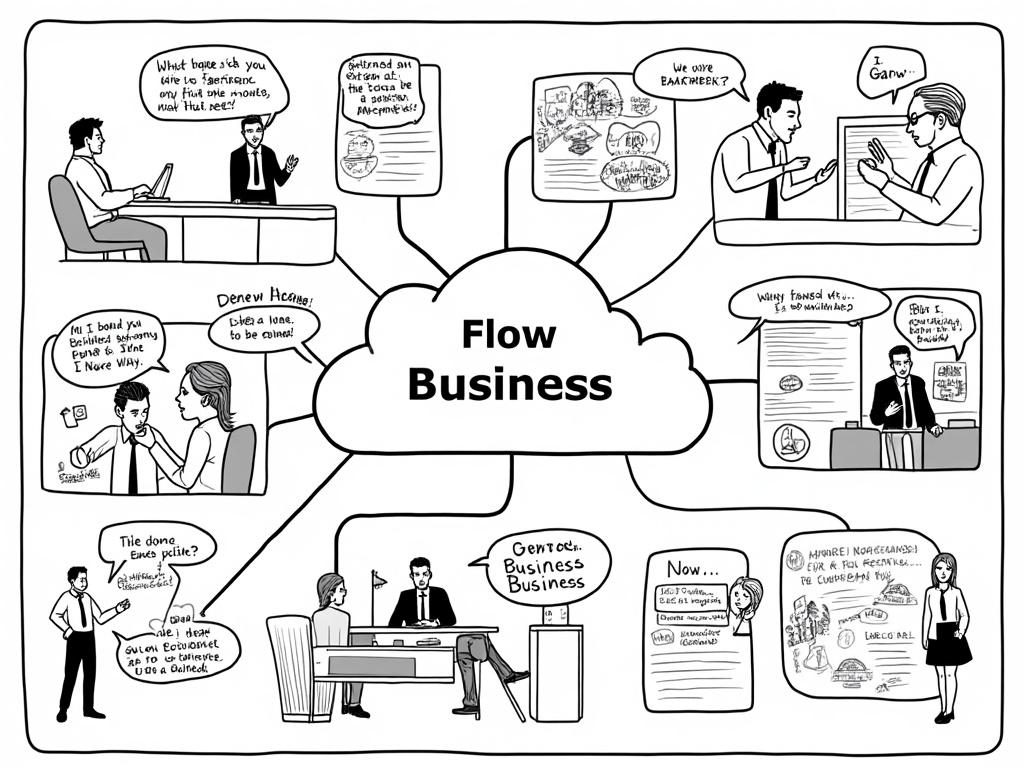
Using an Accountant vs DIY Bookkeeping in Estonia: Pros and Cons
Reading time: 12 minutes
Table of Contents
- Introduction: The Estonian Financial Landscape
- Understanding Estonian Accounting Requirements
- Professional Accountants: Pros and Cons
- DIY Bookkeeping: Pros and Cons
- Cost Analysis: What You’re Really Paying For
- Real-World Scenarios: Case Studies
- The Hybrid Approach: Best of Both Worlds
- Essential Tools and Resources
- Conclusion: Making the Right Choice
- Frequently Asked Questions
Introduction: The Estonian Financial Landscape
Standing at the crossroads of financial decision-making for your Estonian business? You’re facing a critical choice that impacts everything from your daily operations to your year-end tax position. The question isn’t simply about saving money—it’s about optimizing your business’s financial framework in a country known for its digital innovation and straightforward tax system.
Estonia’s business environment presents unique opportunities and challenges. With its 0% corporate income tax on reinvested profits and e-Residency program attracting digital entrepreneurs from around the globe, the country has positioned itself as a business-friendly hub. But this progressive ecosystem still demands precise financial management.
Let’s be clear: There’s no universal “right answer” to whether you should hire an accountant or manage your books yourself. The optimal solution depends on your specific circumstances, business complexity, and personal capabilities. What works for a solopreneur running a consulting business might prove disastrous for a growing startup with multiple revenue streams and employees.
In this comprehensive guide, we’ll dissect both approaches with pragmatic insights, helping you navigate this decision with confidence rather than confusion.
Understanding Estonian Accounting Requirements
Before diving into the pros and cons, let’s establish what Estonian law actually requires from businesses. Estonia operates with relatively streamlined accounting requirements, but ignorance of these fundamentals can lead to costly mistakes.
Legal Accounting Requirements for Estonian Companies
All Estonian companies must:
- Maintain accounting records in accordance with Estonian GAAP or IFRS
- File annual reports within 6 months after the end of the financial year
- Submit VAT returns monthly (if VAT-registered)
- Process payroll and submit tax declarations for employees by the 10th of each month
- Retain accounting documents for 7 years
What’s particularly notable is Estonia’s emphasis on digital documentation. The e-Tax/e-Customs portal allows for streamlined submission of reports and declarations, eliminating much of the paperwork found in other jurisdictions. However, this digital environment doesn’t necessarily simplify the accounting knowledge required.
Consequences of Non-Compliance
The Estonian Tax and Customs Board (EMTA) maintains strict oversight, with penalties for non-compliance including:
- Fines ranging from €300 to €3,200 for late or incorrect filings
- Interest charges of 0.06% per day on late tax payments
- Potential business restrictions for repeated violations
- In extreme cases, board member liability for company obligations
The reality is sobering: approximately 18% of Estonian companies face some form of penalty annually due to accounting or tax-related issues, according to data from the Estonian Chamber of Commerce. This underscores the importance of getting your accounting approach right from the start.
Professional Accountants: Pros and Cons
Hiring an Estonian accountant or accounting firm represents the traditional approach, but is it the right fit for your specific needs? Let’s analyze the advantages and disadvantages with precision.
Advantages of Professional Accounting Services
Expertise in Estonian-Specific Regulations
Professional accountants navigate Estonian tax nuances daily. They understand the intricacies of Estonia’s system, including the deferral of corporate income tax until distribution of profits—a system that differs significantly from most countries. As one client noted: “My accountant identified three perfectly legal tax deductions I had no idea existed, saving me over €2,400 in my first year.”
Time Liberation
Accounting is time-consuming. Estonian accounting firm Excellent reported that business owners who switch from DIY to professional services regain an average of 12-15 hours monthly. For many entrepreneurs, this time redirection toward core business activities represents significant value.
Error Reduction and Audit Protection
Professional accountants dramatically reduce costly mistakes. Research from the Estonian Association of Accountants indicates professionally maintained books experience 76% fewer tax authority inquiries. When audits do occur, having professional representation significantly improves outcomes.
Strategic Financial Guidance
Beyond compliance, quality accountants provide valuable business insights. They can help optimize your company structure, advise on investment timing to maximize Estonia’s reinvested profits tax advantage, and provide benchmarking against industry standards.
Disadvantages of Hiring an Accountant
Cost Considerations
Professional accounting services in Estonia typically range from €75-250 monthly for small businesses, scaling with company complexity. For startups with limited revenue, this represents a significant expense.
Communication Dependencies
You’ll need to establish clear communication channels and provide timely information. This dependency can become problematic if you’re operating across different time zones or during peak periods like month-end.
Varying Quality Standards
Not all Estonian accounting services are created equal. Language barriers, varying expertise with international business models, and differing service levels create inconsistency across providers.
Knowledge Gap Risk
Outsourcing completely can create dangerous knowledge gaps. If you don’t understand your company’s financial position, you risk making uninformed business decisions regardless of accounting accuracy.
DIY Bookkeeping: Pros and Cons
With modern accounting software and Estonia’s digital infrastructure, managing your own books has become increasingly viable. But is self-management the right approach for your situation?
Advantages of DIY Bookkeeping
Cost Efficiency
The most obvious benefit is direct cost savings. Instead of monthly accounting fees, you’ll typically pay only for software (€15-50 monthly for most Estonian-compatible platforms) and perhaps occasional consulting for specific questions.
Real-Time Financial Awareness
When managing your own accounts, you develop intimate knowledge of your financial position. This immediate visibility can improve decision-making agility and cash flow management. As one e-Resident entrepreneur explained: “I catch spending patterns immediately rather than discovering them weeks later in an accountant’s report.”
Control and Flexibility
DIY accounting provides complete control over your financial record organization and immediate access to information without intermediaries. This proves especially valuable for businesses with unusual operating hours or those requiring frequent financial data access.
Building Financial Literacy
Managing your own books develops crucial business skills. Understanding the mechanics behind profit calculations, cash flow management, and tax implications creates a foundation for more sophisticated financial decision-making as your business grows.
Disadvantages of DIY Bookkeeping
Time Investment
The learning curve is substantial. Most entrepreneurs report spending 15-20 hours learning Estonian accounting basics and 5-8 hours monthly on ongoing bookkeeping for a simple business. This time commitment increases significantly during tax filing periods.
Error Vulnerability
Without professional oversight, mistakes become more likely. Even with user-friendly software, misclassifying expenses or misunderstanding Estonian-specific requirements can lead to costly errors. According to Estonian accounting experts, the most common DIY mistakes include:
- Incorrect VAT handling for international transactions
- Improper documentation of business expenses
- Misclassification of distributions versus salary payments
- Errors in currency conversion documentation
Limited Optimization
Without specialized knowledge, you’ll likely miss tax optimization opportunities. DIY practitioners often follow the most straightforward compliance path rather than the most advantageous one permitted by Estonian regulations.
Scaling Difficulties
As your business grows, DIY bookkeeping becomes exponentially more complex. Adding employees, expanding to multiple revenue streams, or working with international clients creates accounting challenges that can quickly overwhelm self-managed systems.
Cost Analysis: What You’re Really Paying For
Let’s move beyond surface-level price comparisons and examine the true economic impact of both options:
| Cost Factor | Professional Accountant | DIY Approach | Considerations |
|---|---|---|---|
| Direct Monthly Costs | €100-250 | €15-50 (software only) | DIY appears significantly cheaper at face value |
| Time Investment (Monthly) | 1-2 hours (preparation/communication) | 5-8 hours (active bookkeeping) | Your hourly value determines the true cost difference |
| Error Correction Costs | Low (typically covered by service) | Potentially high (€300+ for professional fixes) | A single major DIY error can eliminate years of “savings” |
| Tax Optimization Value | High (€1,000+ annually for many businesses) | Limited (basic compliance focus) | Professional insights often pay for themselves |
| Scaling Cost Progression | Gradual increases with business complexity | Exponential time demands as complexity grows | DIY becomes increasingly costly in opportunity cost as you scale |
The hidden economic reality is clear: While DIY bookkeeping reduces direct costs, it often increases overall economic impact through time consumption, missed opportunities, and risk exposure. For businesses generating sufficient revenue, professional accounting frequently represents the more economical choice when all factors are considered.
Real-World Scenarios: Case Studies
Theory is useful, but real experiences provide clearer insight. Let’s examine two contrasting Estonian business scenarios:
Case Study 1: The Solo Consultant’s Approach
Maria, an e-Resident from Spain, runs a digital marketing consultancy through her Estonian company. With a straightforward business model—providing services to 3-5 regular EU clients—she opted for the DIY approach.
Her Setup:
- Accounting software: Xolo Go (€79/month including banking)
- Quarterly consultation with an accountant: €100 per session
- Time investment: 3-4 hours monthly for routine transactions
Outcome: For Maria, DIY made sense. Her business has simple expense patterns, limited transactions, and no employees. The financial equation works because:
“I value the hands-on control, and with only 15-20 transactions monthly, the time investment isn’t burdensome. I’ve built a simple system—each transaction gets categorized immediately, and I’ve created templates for my recurring invoices. The quarterly check-ins with my accountant catch any potential issues before they become problems.”
Maria’s key insight: For straightforward business models with minimal complexity, DIY with occasional professional oversight creates an optimal balance.
Case Study 2: The Growing Tech Startup
Markus founded a SaaS platform with an Estonian company, initially managing finances himself. As his business grew to include 8 employees and customers across 14 countries, the DIY approach became unsustainable.
His Transition:
- Initial: DIY using accounting software (€40/month)
- Current: Professional accounting service (€320/month)
- Transition trigger: Hiring employees and VAT MOSS requirements
Outcome: For Markus, professional accounting became essential as complexity increased:
“When I was a one-person show, managing my own books was manageable. But adding employees changed everything—the payroll regulations, benefit calculations, and reporting requirements consumed hours weekly. When we added customers in multiple countries, the VAT complexity alone justified professional help. Our accountant also identified a structuring approach that saved us nearly €9,000 in taxes last year. The service pays for itself.”
Markus’s key insight: Business complexity creates an inflection point where professional accounting delivers clear ROI through time savings and optimization opportunities.
The Hybrid Approach: Best of Both Worlds
What if neither fully DIY nor completely outsourced accounting suits your needs? A hybrid approach offers a customized middle path that many Estonian businesses find ideal.
Structuring a Hybrid Accounting System
The most effective hybrid approach assigns responsibilities based on complexity, risk, and time efficiency:
DIY Components:
- Basic bookkeeping and transaction categorization
- Invoice generation and client payment tracking
- Receipt collection and preliminary expense categorization
- Basic financial monitoring and reporting
Professional Components:
- VAT calculations and filings
- Payroll processing and tax reporting
- Annual report preparation
- Tax planning and optimization
- Quarterly review of accounts for accuracy
This division keeps you engaged with daily finances while delegating the most technical and high-risk elements to professionals.
Implementing a Successful Hybrid System
Creating an effective hybrid approach requires:
1. Clear Role Definition
Document exactly who handles which accounting functions to avoid dangerous gaps or duplications.
2. Robust Communication Protocols
Establish specific timelines and methods for information exchange with your accountant.
3. Compatible Systems
Select accounting software that facilitates collaboration with external professionals. Many Estonian accountants work effectively with platforms like Xolo, SimplBooks, or Merit Aktiva.
4. Regular Review Cycles
Schedule quarterly reviews to catch potential issues before they become significant problems.
The hybrid model typically costs 30-50% less than full-service accounting while reducing the time burden and risk exposure of pure DIY approaches. For many Estonian businesses, especially those in growth phases or with moderate complexity, this balanced approach delivers optimal value.
Essential Tools and Resources
Regardless of your chosen approach, these resources will enhance your Estonian accounting effectiveness:
Accounting Software Options
The most popular platforms for Estonian businesses include:
- Xolo – Excellent for e-Residents and solopreneurs, with built-in banking and simplified compliance (€79-119/month).
- SimplBooks – Estonian-developed platform with strong local tax compliance features (€9-29/month). Supports both Estonian and English interfaces.
- Merit Aktiva – Comprehensive solution favored by many Estonian accountants for its depth of functionality (€8-32/month).
- QuickBooks Online – International platform with Estonian adaptation available through partners (€20-60/month).
When selecting software, prioritize Estonian tax compatibility, multi-currency functionality if needed, and integration capabilities with your other business systems.
Educational Resources
To build your Estonian accounting knowledge:
- e-Residency Knowledge Base – Offers free guides on Estonian accounting basics.
- Estonian Tax and Customs Board Website (EMTA) – Provides official guidance on tax obligations.
- Estonian Accounting Act – Available in English, outlining core requirements.
- Accounting Service Provider Webinars – Many Estonian firms offer free educational content to prospects.
Finding the Right Professional Help
If you decide professional assistance is needed, consider these selection criteria:
- E-Residency Experience – Ensure they understand non-resident business operations.
- English Proficiency – Confirm comfortable communication if you don’t speak Estonian.
- Industry Familiarity – Seek accountants with experience in your specific sector.
- Technology Compatibility – Verify they work with your preferred systems.
- Service Level Agreements – Clarify response times and communication expectations.
The Estonian Service Providers Marketplace on the e-Residency website offers a curated directory of accounting professionals experienced with international entrepreneurs.
Conclusion: Making the Right Choice
The accountant versus DIY decision ultimately hinges on your specific business context and personal preferences. Here’s a strategic framework for making this choice:
Consider professional accounting if:
- Your business has employees or complex international operations
- You operate in a highly regulated industry
- Your time is better invested in business growth than financial administration
- You lack confidence in Estonian tax regulations
- Your revenue can comfortably support the service cost
Consider DIY bookkeeping if:
- You have a simple business model with limited transactions
- You possess basic accounting knowledge or willingness to learn
- You highly value hands-on control of your finances
- You’re in early startup stages with significant cost sensitivity
- You have the time available for regular financial administration
Consider a hybrid approach if:
- Your business falls between simple and complex
- You want financial engagement without technical compliance risk
- You’re growing and anticipate changing needs
- You seek cost optimization while minimizing risk
Remember that your approach can evolve with your business. Many successful Estonian entrepreneurs begin with DIY systems during early stages, transition to hybrid models during growth phases, and eventually implement fully professional solutions as complexity increases.
The ultimate measure of success isn’t which approach you choose, but whether your financial management system provides the visibility, compliance, and insights needed to support your business goals while allowing you to focus your energy where it creates the most value.
Frequently Asked Questions
Is it legally required to hire an accountant for an Estonian company?
No, Estonian law does not mandate hiring a professional accountant. The legal requirement is that accounting records must be maintained according to Estonian standards and reports filed correctly. Whether you manage this yourself or hire professional help is your decision. However, board members bear legal responsibility for accuracy regardless of who performs the accounting functions.
What are the most common financial mistakes made by e-Residents running Estonian companies?
Based on data from Estonian accounting firms, the most frequent errors include: incorrectly distinguishing between distributed profits (taxable) and reinvested profits (not subject to corporate tax), improper documentation of business expenses leading to VAT recovery issues, mishandling of cross-border VAT obligations, and inadequate separation of personal and business expenses. These mistakes often stem from applying accounting logic from other jurisdictions to Estonia’s unique system, particularly regarding the corporate income tax deferral on reinvested profits.
At what point does hiring an accountant become more economical than DIY bookkeeping?
The tipping point typically occurs when your business reaches 25-30 transactions monthly, employs staff, or operates across multiple jurisdictions. At this complexity level, the time investment for DIY bookkeeping often exceeds 10 hours monthly. When your business revenue reaches approximately €5,000-6,000 monthly, the opportunity cost of this time investment combined with the increasing risk of costly errors usually makes professional accounting more economical. However, this threshold varies based on your comfort with financial management and the complexity of your specific business model.



